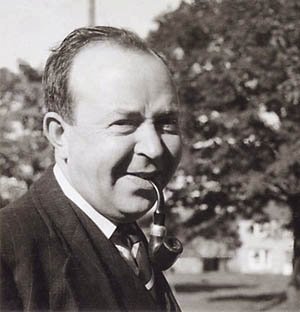 To
mark April Fool’s Day known in Gaelic as Latha
na Gogaireachd, here is a short and amusing anecdote recorded from
Archibald MacInnes, then a pensioner aged seventy who belonged to
Achluachrach, Brae Lochaber, by Calum Maclean on the 28th of March 1951:
To
mark April Fool’s Day known in Gaelic as Latha
na Gogaireachd, here is a short and amusing anecdote recorded from
Archibald MacInnes, then a pensioner aged seventy who belonged to
Achluachrach, Brae Lochaber, by Calum Maclean on the 28th of March 1951:
Bha oighreachd aig Mac ’ic Alasdair ann an Cn(r)òidearst.
Agus bha an oigreachd cho mór ris an té ’ile. ’S e an aon oighreachd a bh’ ann
ann “Oighre Chnòidearst a’ bharraich is Gleann Garadh mu thuath.”
Bha amadan aig Mac ’ic Alasdair. Chaidh an t-amadan is fear glic, chaidh iad a
dh’ obair air maorach ’s an tràigh. Bha iad a’ faighinn air adharst
gasda. A’ fear nach robh ’na amadan, an duine glic, thàinig e air poit òir. Dh’éigh
e ris an amadan:
“Trobhad a seo. Seall air a seo. Sin agad òr.”
“O, well,” thuirst an t-amadan
ris, “’n uair a bhios sinn a’ maorach bidh sinn a’ maorach. ’N uair a bhios
sinn ag òrach bidh sinn ag òrach. Cum orst a’ seo.”
Chum a’ fear eile air còmh’ ris an amadan air
a’ mhaorach a bh’ ac(hc)a. Agus thàinig an làn a-staigh. Ach cho luath is a bha
an làn a-mach làr-na-mhàireach, bha an t-amadan a-muigh is bha an t-òr aige mun
d’fhuair a’ fear eile ’na charaibh. Co-dhiubh is e amadan a bh’ ann an dala
dòigh, cha robh e ’na amadan ’n uair a chunnaic e an t-òr.
And
the translation goes something like this:
MacDonell of Glengarry owned the Knoydart
estate and it was as large as his other one. It was the same estate as the “brushwood
Knoydart’s heir and Glengarry in the north.” Glengarry had a jester. The jester
and a wise man both went to pick shellfish on the strand. They both got on
well. The man who wasn’t a fool – the wise man – found a pot of gold. He
shouted over to the jester:
“Come over there and take a look at this. There
you have gold.”
“Oh, well,” said the jester to him, “when we’re
picking shellfish we’ll be picking shellfish and when we’re prospecting for
gold we’ll be prospecting for gold. Keep going.”
The other man kept going along with the
jester picking the shellfish they had. The tide then came in but as soon as the
tide was out the next day the jester went out and got the gold before the other
man could get near him. Whether he was a fool in one way or another, he
certainly wasn’t a fool when he saw the gold.
Probably
jesters or professional fools were not that an uncommon sight in the households
of the Gaelic nobility where many of them maintained fairly large retinues. The most famous
type of travelling fools were the Cliar
Sheanchain or Senchan’s Company, a wandering band
of poet-satirists who since medieval times had exacted hospitality from often
unwilling hosts throughout Gaelic Scotland. The above anecdote plays
upon the notion of a wise fool, a phenomenon that goes as far back if not
further to the medieval world in the Highlands and Islands as well as
elsewhere.
References:
SSS NB 7, p. 650
John
Shaw, ‘What Alexander Carmichael Did Not Print: The
Cliar Sheanchain, ‘Clanranald's Fool’ and Related Traditions’, Béaloideas, vol. 70 (2002), pp. 99–126
────, ‘Scottish Gaelic Traditions of the Cliar Sheanchain’, in Cyril J. Byrne,
Margaret Harry and Pádraig Ó Siadhail (eds.), Celtic Languages and Celtic Peoples: Proceedings of the Second North
American Congress of Celtic Studies (Halfix, N.S., 1992), pp. 141–58
Image:
Amadan
/ Jester

No comments:
Post a Comment